| • LINGAM, THE SYMBOL OF COSMIC ENERGY |
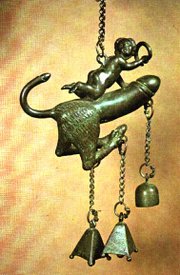 Power, Energy, and life-sustaining elixir -- the divine combination of cosmic chakras that provide motivation for life to carry on, reproduce, and self-perpetuate. Whereas a Male has the power epitomized in his phallus, the female has all three -- power (clitoris), energy (yoni or vagina), and life-sustaining elixir (breast milk). LINGAM, a Sanskrit word, literally means 'symbol' but it is frequently associated with the stylized representation of masculine cosmic energy epitomised in the male penis. In the Hindu religion, the representation of 'Lingam' is considered to mean the union or sangam of the male and the female reproductive organs, the penis and the vagina or pundai. Some Scholars may even view the Lingam as representing the act of COITUS, with the human penis firmly impaled in the human vagina. This view is considered by many as an accurate representation of the significance of LINGAM in asmuch as the conventional representation of Lingam shows the shaft of the penis as the visible part outside the 'yoni', not the head of the penis, which is considered to be deep inside the yoni or the female cunt. Power, Energy, and life-sustaining elixir -- the divine combination of cosmic chakras that provide motivation for life to carry on, reproduce, and self-perpetuate. Whereas a Male has the power epitomized in his phallus, the female has all three -- power (clitoris), energy (yoni or vagina), and life-sustaining elixir (breast milk). LINGAM, a Sanskrit word, literally means 'symbol' but it is frequently associated with the stylized representation of masculine cosmic energy epitomised in the male penis. In the Hindu religion, the representation of 'Lingam' is considered to mean the union or sangam of the male and the female reproductive organs, the penis and the vagina or pundai. Some Scholars may even view the Lingam as representing the act of COITUS, with the human penis firmly impaled in the human vagina. This view is considered by many as an accurate representation of the significance of LINGAM in asmuch as the conventional representation of Lingam shows the shaft of the penis as the visible part outside the 'yoni', not the head of the penis, which is considered to be deep inside the yoni or the female cunt. 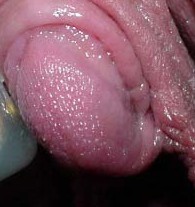 There is also a view that is held by many scholars that the Lingam actually is the symbol of the female vagina, with the protruding part of the Lingam representing the female clitoris. This view is supported by the fact that the clitoris of some human vaginas are as big as the smallest male penis, and connote 'power' in the same manner as the male penis does. The truth is that the yoni or the Vagina represents energy whereas the 'Lingam' or the 'clitoris' symbolizes the'power' traditionally associated with the male penis. There is also a view that is held by many scholars that the Lingam actually is the symbol of the female vagina, with the protruding part of the Lingam representing the female clitoris. This view is supported by the fact that the clitoris of some human vaginas are as big as the smallest male penis, and connote 'power' in the same manner as the male penis does. The truth is that the yoni or the Vagina represents energy whereas the 'Lingam' or the 'clitoris' symbolizes the'power' traditionally associated with the male penis.
Traditional form of worship of Linga involved pouring milk over the erect phallic shaft of the Lingam, symbolizing the semen or the 'milk of life' dripping down the female clitoris. The milk is collected through the 'cloaca' as it 'drips down the vaginal lips' symbolized by the protruding drain hanging out of the Yoni or vagina represented by the circular rim around the 'clitoris'. The 'milk of life' flowing through the 'cloaca' and dripping out of the metaphorical 'vaginal lips' is offered to the Linga Puja and Yoni Puja participants. In some TANTRIC versions of Linga Puja, both male and female humans participate in the ritual, with the male copulating with the female yoni and interrupts his coitus at the point of ejaculation of semen. The semen is then sprayed on the clitoris of the human vagina, and collected at the bottom of the vaginal lips along with other libations flowing out of the cunt. It is then offered to the Linga Puja and Yoni Puja participants as 'prashad'. The Yoni or the cunt may be penetrated by several 'linga' or penises in order to allow every participant to actively sanctify the 'clitoris' and receive its 'blessings'.
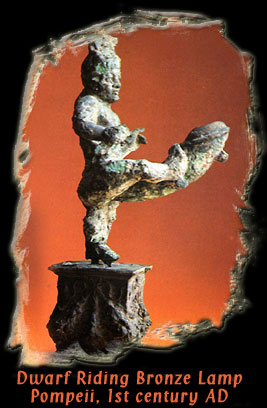 The Linga or the Phallus refers to the erect male penis, although it could refer to the the clitoris of a female vagina. During fetal development, the sex organs of male and female are the same before sexual differentiation is evident. In fact, the 'clitoris' is considered to be a 'phallus that forgot to grow'. In the Hindu religion, Lingam is usually found with Yoni. The traditional representation of Lingam is a phallus deeply penetrated inside the Yoni or the vagina. It was natural for the tribes of Indus Valley to look at the togetherness of genital parts of the male (penis) and female (Yoni or the cunt) as the point of energy, point of creation, and point of enlightenment or Nirvana. Such a revelation was later enriched by many philosophies and theologies as man's knowledge of God widened with the growth of civilizations. In anthropology, phallicism refers to the ritual adoration of the human penis, or the phallus. Elements of phallicism have been found in many cultures, including Rome, Ancient Greece, certain Hindu sects in India, Norway, Iceland, and in Sumeria. The Linga or the Phallus refers to the erect male penis, although it could refer to the the clitoris of a female vagina. During fetal development, the sex organs of male and female are the same before sexual differentiation is evident. In fact, the 'clitoris' is considered to be a 'phallus that forgot to grow'. In the Hindu religion, Lingam is usually found with Yoni. The traditional representation of Lingam is a phallus deeply penetrated inside the Yoni or the vagina. It was natural for the tribes of Indus Valley to look at the togetherness of genital parts of the male (penis) and female (Yoni or the cunt) as the point of energy, point of creation, and point of enlightenment or Nirvana. Such a revelation was later enriched by many philosophies and theologies as man's knowledge of God widened with the growth of civilizations. In anthropology, phallicism refers to the ritual adoration of the human penis, or the phallus. Elements of phallicism have been found in many cultures, including Rome, Ancient Greece, certain Hindu sects in India, Norway, Iceland, and in Sumeria.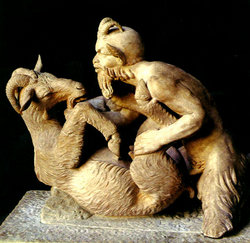 The concept of Phallus worship is not uncommon in many religious sects. In traditional Greek religion, Hermes, before being considered a messenger of God, was considered to be a phallic deity associated with male fertility. This may explain the conditions of his offspring Pan, who was often portrayed as having a constant penile erection.
The concept of Phallus worship is not uncommon in many religious sects. In traditional Greek religion, Hermes, before being considered a messenger of God, was considered to be a phallic deity associated with male fertility. This may explain the conditions of his offspring Pan, who was often portrayed as having a constant penile erection.  The Norse god Freyr (English 'Frey') is considered to be a phallic deity, representing male fertility, procreation, and love. A statuette of Freyr has been found in Sweden, where Freyr sports an erected organ resembling an erect penis, an observation that is confirmed by Adam of Bremen in his description of the statue of Freyr in the Temple at Uppsala. The Norse god Freyr (English 'Frey') is considered to be a phallic deity, representing male fertility, procreation, and love. A statuette of Freyr has been found in Sweden, where Freyr sports an erected organ resembling an erect penis, an observation that is confirmed by Adam of Bremen in his description of the statue of Freyr in the Temple at Uppsala.  There is also the Norwegian story Völsa ţáttr about how a family of Norwegians worshiped a conserved horse's penis. Before supper, the lady of the house would bring out the horse's penis, say prayers,and then pass it around to the other members of the household. The teenage son of the household was said to have remarked to his sister that the 'horse's penis' will 'feel good between her legs". (Even today, the penis of a horse symbolizes the ultimate male potency, and female fantacises about coitus with a horse's penis are not uncommon). Phallicism was also practised In ancient Rome, where Wearing jewelry shaped to resemble the male phallus was supposed to ward off the evil eye and bring good luck to the wearer of the 'phallic charm'. In Egypt as well as in the Greco-Roman world, the phallus was considered to have attributes that dispel darkness and the demonic forces. Numerous references have been found in European literature regarding the belief that phallic objects were felt to have magical powers, especially in averting all kinds of misfortunes. There is also the Norwegian story Völsa ţáttr about how a family of Norwegians worshiped a conserved horse's penis. Before supper, the lady of the house would bring out the horse's penis, say prayers,and then pass it around to the other members of the household. The teenage son of the household was said to have remarked to his sister that the 'horse's penis' will 'feel good between her legs". (Even today, the penis of a horse symbolizes the ultimate male potency, and female fantacises about coitus with a horse's penis are not uncommon). Phallicism was also practised In ancient Rome, where Wearing jewelry shaped to resemble the male phallus was supposed to ward off the evil eye and bring good luck to the wearer of the 'phallic charm'. In Egypt as well as in the Greco-Roman world, the phallus was considered to have attributes that dispel darkness and the demonic forces. Numerous references have been found in European literature regarding the belief that phallic objects were felt to have magical powers, especially in averting all kinds of misfortunes.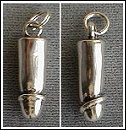 In Imperial Rome, the phallus bestowed good luck while dissipating danger and driving away the forces seeking to do evil. The street corners in ancient Athens each had its cippus dedicated to Hermes, the God that symbolized male potency and fertiity. The cippus consisted of a square column topped with the god's head, on which were sculpted genital organs in erection, which passers-by would touch and kiss for luck.
In southern Italy, phallic boundary markers can still be seen in the present day. Some of these are stone blocks or pillars from which emerge a phallus, sometimes accompanied by a human head. In Roman times they were called Hermes, Priapus, Liber, Tuttinus, or Mutinus.
In the countries of the Mediterranean, realistic and symbolic phallic emblems have often been planted in farm fields for luck and a fertilizing presence.
In Imperial Rome, the phallus bestowed good luck while dissipating danger and driving away the forces seeking to do evil. The street corners in ancient Athens each had its cippus dedicated to Hermes, the God that symbolized male potency and fertiity. The cippus consisted of a square column topped with the god's head, on which were sculpted genital organs in erection, which passers-by would touch and kiss for luck.
In southern Italy, phallic boundary markers can still be seen in the present day. Some of these are stone blocks or pillars from which emerge a phallus, sometimes accompanied by a human head. In Roman times they were called Hermes, Priapus, Liber, Tuttinus, or Mutinus.
In the countries of the Mediterranean, realistic and symbolic phallic emblems have often been planted in farm fields for luck and a fertilizing presence.  In the Indus valley, it was considered a sign of great fortune to observe the erect phallus of any animal. Particularly, it was meant to bring 'good luck' and 'children' for a woman to observe a horse or an elephant having a phallic erection or in a state of coitus with the female of the species. In the Indus valley, it was considered a sign of great fortune to observe the erect phallus of any animal. Particularly, it was meant to bring 'good luck' and 'children' for a woman to observe a horse or an elephant having a phallic erection or in a state of coitus with the female of the species.
| • PHALLUS IN PSYCHOANALYSIS |
In psychoanalysis, The symbolic version of the phallus, a phallic symbol is meant to represent male generative powers. According to the psychoanalytic theory of Sigmund Freud, males possess a penis, but no one can possess the symbolic phallus. The symbolic phallus is the concept of being the ultimate man, and having this is compared to having the divine gift of God. In Jacques Lacan's Ecrits: A Selection, he includes an essay "The Signification of the Phallus," which articulates the difference between "being" and "having" the phallus. Men are positioned as men insofar as they are seen to have the phallus. women, not having the phallus, are seen to "be" the phallus, within a heterosexual framework. In a Lesbian, the woman whose clitoris is more pronounced in its appearance and is bigger will take on the role of the male in a heterosexual relationship. In order to appreciate the nuanced interpretation of 'having' a phallus and 'being' a phallus, we need to recognize that the concept of Phallus is much more than a physical manifestation of the male penis. The male has the POTENTIAL to create life through sexual intercourse and by spilling his seeds in the female vagina. The female, on the other hand, is the TROE POTENTIAL FOR LIFE, and is considered to BE the Phallus. In this interpretation, the word PHALLUS connotes POTENTIAL, not merely the penis. The phallus signifies the symbolic power that is associated with the male genitalia. The male genitals have always been metaphorically referred to as representation of male prowess. "Having balls", "getting it up" or "strapping it on" are all expressions that signify 'power' and 'authority'. The female Yoni or the Cunt is the symbolic expression of 'energy' or 'shakthi'. "Power" without 'energy' is useless, and the male penis requires the female vagina or the Yoni to fully actualize its power potential. In Physiological terms, the mere sight of the source of energy, the cunt, arouses the power potential of the phallus, the penis, and gives it the authoritative 'erection'. Visualization techniques such as practiced in the NUDE YOGA sessions of the NIRVANA SOCIETY also allow a male to visualize the Yoni or the vagina and achieve erection, symbolizing self-actualization. In Judith Butler's Gender Trouble, she explores the Freud and Lacan discussions of the symbolic phallus by pointing out the connection that the phallus maintains to the penis. She writes, "the Phallus, though clearly not identical with the penis, nevertheless deploys the penis as its naturalized instrument and sign". In Bodies that Matter, she further explores the possibilities for the phallus in her discussion of "The Lesbian Phallus." If, as she notes, "Freud enumerates a set of analogies and substitutions that rhetorically affirm the fundamental transferability of that property," that is, the transferability of the phallus from the penis to elsewhere, then any number of other things might come to stand for the phallus.
In Judith Butler's Gender Trouble, she explores the Freud and Lacan discussions of the symbolic phallus by pointing out the connection that the phallus maintains to the penis. She writes, "the Phallus, though clearly not identical with the penis, nevertheless deploys the penis as its naturalized instrument and sign". In Bodies that Matter, she further explores the possibilities for the phallus in her discussion of "The Lesbian Phallus." If, as she notes, "Freud enumerates a set of analogies and substitutions that rhetorically affirm the fundamental transferability of that property," that is, the transferability of the phallus from the penis to elsewhere, then any number of other things might come to stand for the phallus. Objects considered to be phallic symbols include bananas, baseball bats, monuments such as Obelisk, the Statue of liberty, Washington Monument, Religious buildings such as The Ascension Church in Kolomenskoe, the minarets, skycrapers such as the Swiss Re building shaped like a phallus, Chrysler Building in New York, and the TransAmerica tower in San Francisco; Towers such as Eiffel Tower, guitars, airplanes, guns, ties, totems, and the middle finger.
Objects considered to be phallic symbols include bananas, baseball bats, monuments such as Obelisk, the Statue of liberty, Washington Monument, Religious buildings such as The Ascension Church in Kolomenskoe, the minarets, skycrapers such as the Swiss Re building shaped like a phallus, Chrysler Building in New York, and the TransAmerica tower in San Francisco; Towers such as Eiffel Tower, guitars, airplanes, guns, ties, totems, and the middle finger.
|
|
| • KUNDI YOGA, CELEBRATION OF BUTTOCKS |
 Linga (penis or clitoris) signifies power whereas Yoni or Pundai signifies the energy or shakthi. The discussion of POWER that the PHALLUS symbolizes and of ENERGY that the female YONI or the CUNT symbolizes is not complete without a recognition of the SEAT OF POWER OR ENERGY. The human attraction of the buttocks or the arse of male or female stems from the fact that the buttocks are the SEAT of such power and energy. The English word 'ass' or 'arse'comes from the Sanskrit 'asanam', which means the 'seat'. A well-rounded female buttocks supports the cunt (derived from kunti, the mother of Pancha-Pandavas and the first virgin mother before Mary) during sexual penetration and provides the motivation for the male phallus to reach its full power. Linga (penis or clitoris) signifies power whereas Yoni or Pundai signifies the energy or shakthi. The discussion of POWER that the PHALLUS symbolizes and of ENERGY that the female YONI or the CUNT symbolizes is not complete without a recognition of the SEAT OF POWER OR ENERGY. The human attraction of the buttocks or the arse of male or female stems from the fact that the buttocks are the SEAT of such power and energy. The English word 'ass' or 'arse'comes from the Sanskrit 'asanam', which means the 'seat'. A well-rounded female buttocks supports the cunt (derived from kunti, the mother of Pancha-Pandavas and the first virgin mother before Mary) during sexual penetration and provides the motivation for the male phallus to reach its full power. In Kama Sutra, the female buttocks take on a special significance, with the well-defined crack of the buttocks and the two venus dimples above the hip forming the cosmic triangle of creative energy. Some of the most erotic kama sutra positions involve vaginal penetration by Lingam through the rear arches of the female buttocks -- either with the female on all fours or with the female resting on her left hips with the right buttocks hoisted up for vaginal penetration by the penis. In Kama Sutra, the female buttocks take on a special significance, with the well-defined crack of the buttocks and the two venus dimples above the hip forming the cosmic triangle of creative energy. Some of the most erotic kama sutra positions involve vaginal penetration by Lingam through the rear arches of the female buttocks -- either with the female on all fours or with the female resting on her left hips with the right buttocks hoisted up for vaginal penetration by the penis.
| • KUNDI AS A METRIC OF PHYSICAL HEALTH |
 A beautiful pair of buttocks in good proportion to the rest of the body, especially in females, is a certification of good health. One such 'attractive' physical attribute of women that positively correlates in to an indicator of child bearing ability and healthiness is relative waist to hip ratio (2). Men are observed to 'biologically' prefer women with a striking hour glass figure (a small waist to hip ratio) since these physical features of a woman are what is considered the most salient indicators of her ability to procreate. A beautiful pair of buttocks in good proportion to the rest of the body, especially in females, is a certification of good health. One such 'attractive' physical attribute of women that positively correlates in to an indicator of child bearing ability and healthiness is relative waist to hip ratio (2). Men are observed to 'biologically' prefer women with a striking hour glass figure (a small waist to hip ratio) since these physical features of a woman are what is considered the most salient indicators of her ability to procreate.  Through observations evolutionary biologists have found a link between the popular fascination for Barbie doll curves (or small waist to hip ratios) in women and a higher disposition of fertility and health. Worldwide men of diverse backgrounds, ethnicity and ages have ranked women with a small waist to hip ratio of around 0.7(the waist is 70% the size of the hips), irrespective of variance in weight as the most attractive and healthy . This corresponds to scientific assessments that verify a woman with a small waist to hip ratio (WHR) as the most healthy and fertile. WHR is found to be positively correlated with high testosterone and negatively linked to estrogen (3), thereby high degrees of estrogen lead to low WHR. Through observations evolutionary biologists have found a link between the popular fascination for Barbie doll curves (or small waist to hip ratios) in women and a higher disposition of fertility and health. Worldwide men of diverse backgrounds, ethnicity and ages have ranked women with a small waist to hip ratio of around 0.7(the waist is 70% the size of the hips), irrespective of variance in weight as the most attractive and healthy . This corresponds to scientific assessments that verify a woman with a small waist to hip ratio (WHR) as the most healthy and fertile. WHR is found to be positively correlated with high testosterone and negatively linked to estrogen (3), thereby high degrees of estrogen lead to low WHR.  A high concentration of estrogen in the female body especially after puberty results in nearly 35 pounds of reproductive fat deposited on the hips and thighs rather than on the waist. A study conducted in Netherlands has found that even a slight increase in waist to hip circumference might lead to reproductive problems and infertility, as a woman with a WHR of 0.9 is nearly one third less likely to get pregnant than a woman with a 0.8 WHR. In addition, a higher degree of adult onset diabetes has been observed in women with high WHR.Thereby it could be observed that a female with a more hourglass figure is more fertile and healthy than non-curvaceous or high WHR woman. Male fascination with more curvy women therefore translates into a reasonable indicator of the actual reproductive value of females since the low WHR is associated with high fertility and good health. This is a good example of sexual selection in the evolutionary process. The primary motivation for living is the need to procreate and a female with buxom kundi and an hour-glass figure provides the ENERGY or MOTIVATION for the male phallus to achieve its full potential or erection. A high concentration of estrogen in the female body especially after puberty results in nearly 35 pounds of reproductive fat deposited on the hips and thighs rather than on the waist. A study conducted in Netherlands has found that even a slight increase in waist to hip circumference might lead to reproductive problems and infertility, as a woman with a WHR of 0.9 is nearly one third less likely to get pregnant than a woman with a 0.8 WHR. In addition, a higher degree of adult onset diabetes has been observed in women with high WHR.Thereby it could be observed that a female with a more hourglass figure is more fertile and healthy than non-curvaceous or high WHR woman. Male fascination with more curvy women therefore translates into a reasonable indicator of the actual reproductive value of females since the low WHR is associated with high fertility and good health. This is a good example of sexual selection in the evolutionary process. The primary motivation for living is the need to procreate and a female with buxom kundi and an hour-glass figure provides the ENERGY or MOTIVATION for the male phallus to achieve its full potential or erection.
 some scientific theories also suggest that females were biologically meant to have sex from the rear, with their buttocks providing the extra motivation for the Linga to achieve its full erection. There are also biologicaly reasons for sex when the woman has her buttocks up or jutting out is desirable.
some scientific theories also suggest that females were biologically meant to have sex from the rear, with their buttocks providing the extra motivation for the Linga to achieve its full erection. There are also biologicaly reasons for sex when the woman has her buttocks up or jutting out is desirable. 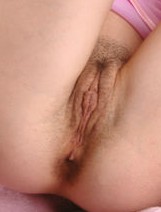 The first is simply a design of nature. In the natural world males always approach and have sex with the female from the rear. Evolution has designed the female genitalia (vagina or pundai) to be entered from the rear, as opposed to the face to face. The "missionary" position, although it provides stimulus through the potential for kissing and licking of the breasts, the nerve endings of the female genitalia are genetically arranged to be most responsive for penetration by penis from the rear. The inside of the thighs and labial lips are more sensitive to touch and thrusting, when stroked from the rear (as opposed to the front). The first is simply a design of nature. In the natural world males always approach and have sex with the female from the rear. Evolution has designed the female genitalia (vagina or pundai) to be entered from the rear, as opposed to the face to face. The "missionary" position, although it provides stimulus through the potential for kissing and licking of the breasts, the nerve endings of the female genitalia are genetically arranged to be most responsive for penetration by penis from the rear. The inside of the thighs and labial lips are more sensitive to touch and thrusting, when stroked from the rear (as opposed to the front).  Some would argue that face to face intercourse is more intense and fulfilling. This may be true on a purely emotional level, even without optimizing the physiological connection. It's simply a matter of which is more important, the mind or the body. During love making the mind is often capable of reaching significantly higher levels than the physical being.
Another reason that sexual intercourse with the "buttocks hoisted up" may have an advantage is that a woman often feelS more comfortable and relaxed in this position, as her body is less exposed. The sexual intercourse from the back, with the woman lying on her stomach is also the way the nature intended because the feeling of the "face down" position is conducive in fostering a sense of well being, which in turn makes it easier for the woman to "let herself go" during sexual intimacy. A woman has a better chance of reaching orgasm in this manner than during sexual intercourse in the missionary position.
Some would argue that face to face intercourse is more intense and fulfilling. This may be true on a purely emotional level, even without optimizing the physiological connection. It's simply a matter of which is more important, the mind or the body. During love making the mind is often capable of reaching significantly higher levels than the physical being.
Another reason that sexual intercourse with the "buttocks hoisted up" may have an advantage is that a woman often feelS more comfortable and relaxed in this position, as her body is less exposed. The sexual intercourse from the back, with the woman lying on her stomach is also the way the nature intended because the feeling of the "face down" position is conducive in fostering a sense of well being, which in turn makes it easier for the woman to "let herself go" during sexual intimacy. A woman has a better chance of reaching orgasm in this manner than during sexual intercourse in the missionary position.
The anal intercourse, through not discussed in Kama Sutra, is routinely engaged in during Tantric rituals, if the Stri does not show any aversion to such anal penetration.
| • STHANA PUJA -- MASS OF FEMALE BREASTS |
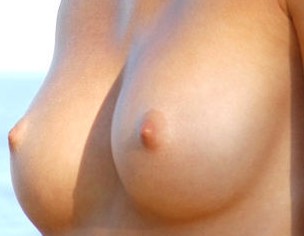 STHANAM, in Sanskrit, means the female breasts. In Hindu Shastra, the female breasts are revered for the reason that they produce life-sustaning milk soon after the Stri gives birth to a new life. The female body is adorned with numerous jewels, each one created for a specific purpose: the Yoni or the cunt is the source of pleasure and the source of life and the Sthana or the breasts sustain life as soon as it is given human form. The male fascination with the female breasts stems from the infancy when suckling on the female breasts was at once necessary for biological necessities. The human fascination with the well-rounded buttocks also arises from our association of round objects with pleasure as experienced during infancy. STHANAM, in Sanskrit, means the female breasts. In Hindu Shastra, the female breasts are revered for the reason that they produce life-sustaning milk soon after the Stri gives birth to a new life. The female body is adorned with numerous jewels, each one created for a specific purpose: the Yoni or the cunt is the source of pleasure and the source of life and the Sthana or the breasts sustain life as soon as it is given human form. The male fascination with the female breasts stems from the infancy when suckling on the female breasts was at once necessary for biological necessities. The human fascination with the well-rounded buttocks also arises from our association of round objects with pleasure as experienced during infancy.
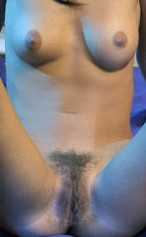 Yoni Yoga, in some rituals, also involves STHANA YOGA. The STRI is bathed in milk and honey and sits with her legs slightly spread so that her Yoni or Pundai is clearly visible to the Yoni Yoga participants. The five libations of Milk, Honey, Yoghurt, water, and oil, symbolizing the five major cosmic elements, are poured over the Sthana and allowed to run down her stomach area on to her Yoni where it is collected along with the secretions from the female Yoni and offered to the Yoni Yoga participants. If the Yoni-Sthana puja involves a Virgin woman whose hymen is intact, then the puja takes on a special significance. The virgin Kanya does not produce libations in the same manner as a woman who is sexually experienced does but the mixture of five libations that flow through the vagina are allwed to be purified by the hymen. The resulting prasad is believed in Hindu Shastra to extend the life-span of the devotee and to confer immunity upon them from diseases. Yoni Yoga, in some rituals, also involves STHANA YOGA. The STRI is bathed in milk and honey and sits with her legs slightly spread so that her Yoni or Pundai is clearly visible to the Yoni Yoga participants. The five libations of Milk, Honey, Yoghurt, water, and oil, symbolizing the five major cosmic elements, are poured over the Sthana and allowed to run down her stomach area on to her Yoni where it is collected along with the secretions from the female Yoni and offered to the Yoni Yoga participants. If the Yoni-Sthana puja involves a Virgin woman whose hymen is intact, then the puja takes on a special significance. The virgin Kanya does not produce libations in the same manner as a woman who is sexually experienced does but the mixture of five libations that flow through the vagina are allwed to be purified by the hymen. The resulting prasad is believed in Hindu Shastra to extend the life-span of the devotee and to confer immunity upon them from diseases.
In Tantric rituals, this type of Yoni-Sthana Puja is also celebrated with a menstruating woman, producing an even more powerful liquid, known as yonipushpa (flower of the Yoni). Although this is a practice forbidden by most texts and within many sects, it is specifically advocated in the hard-core version of Yoni Tantra.
| • YONI-STHANA PUJA AT NIRVANA SOCIETY |
The Nirvana Society routinely organizes Nude Yoni-Sthana Puja rituals. The objective of the ritual is to celebrate the source of life and to partake in the life-sustaining libations sanctified by the female breasts and Yoni. Nirvana Society also offers private sessions for intimate groups. For more information, contact Niravana Society. Om Shanthi!
For more information, contact us at YONI-STHANA PUJA
|
|
|


